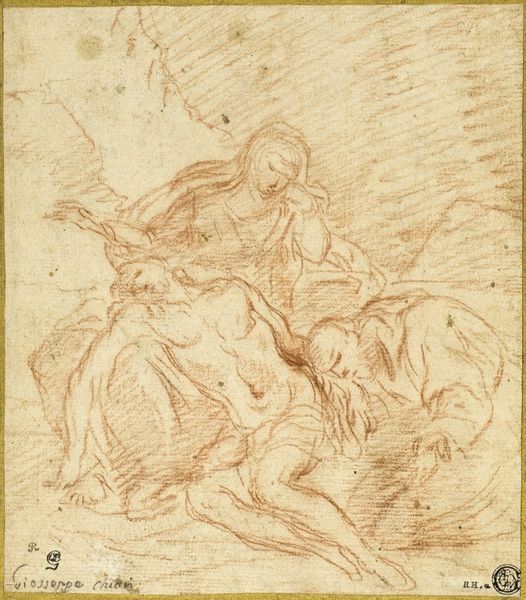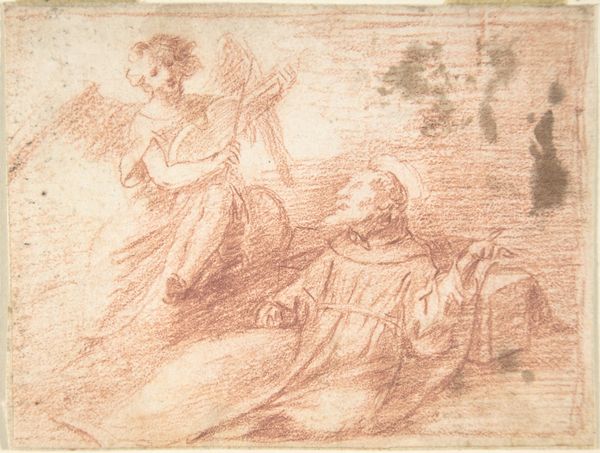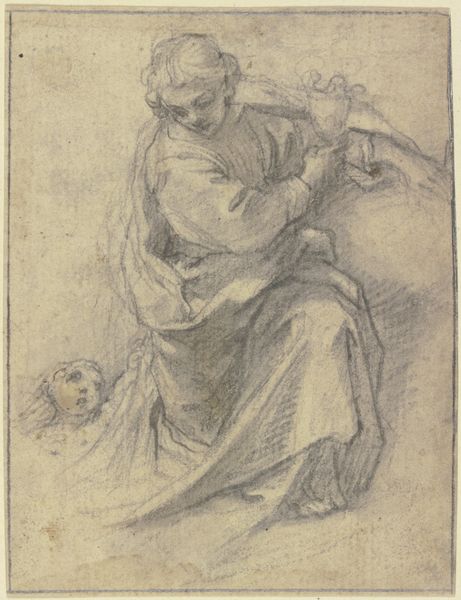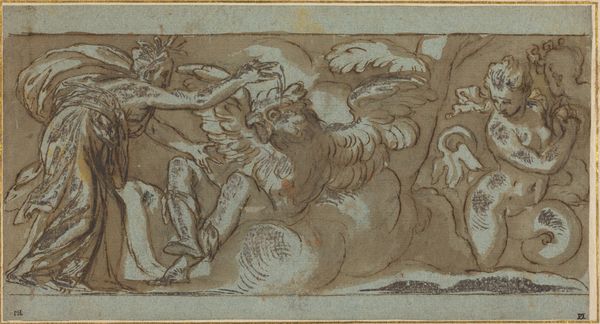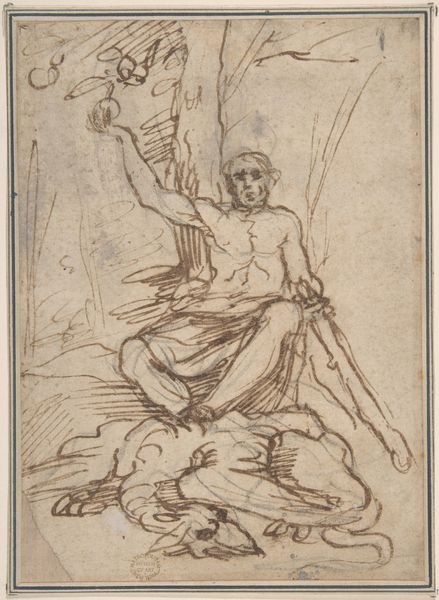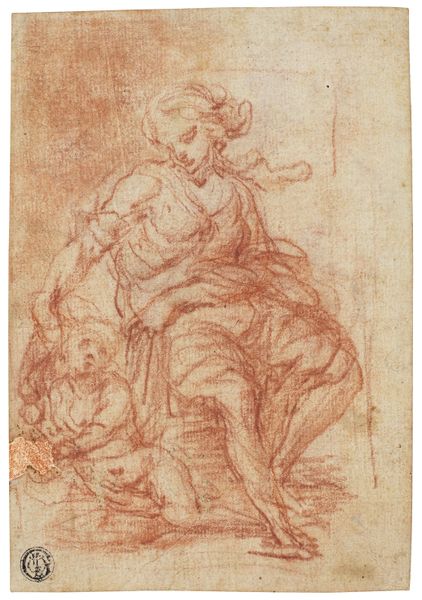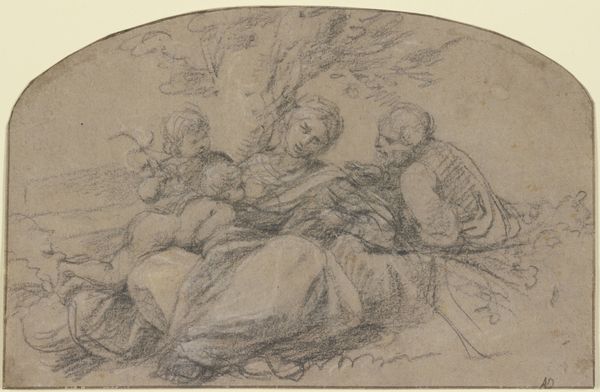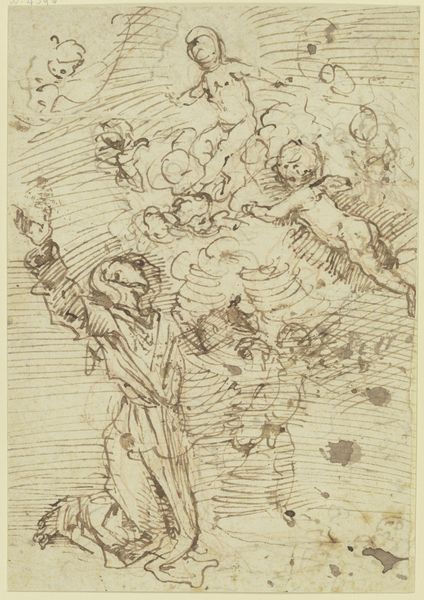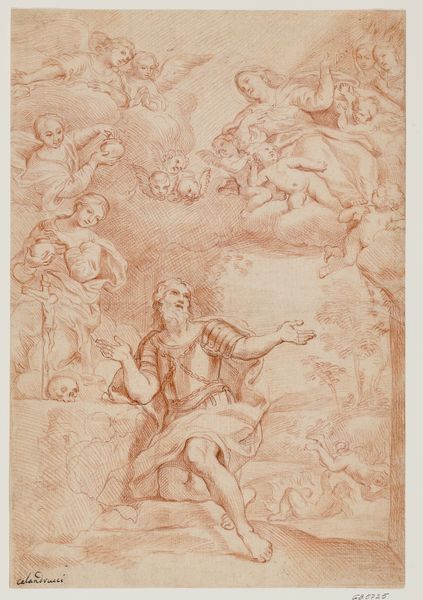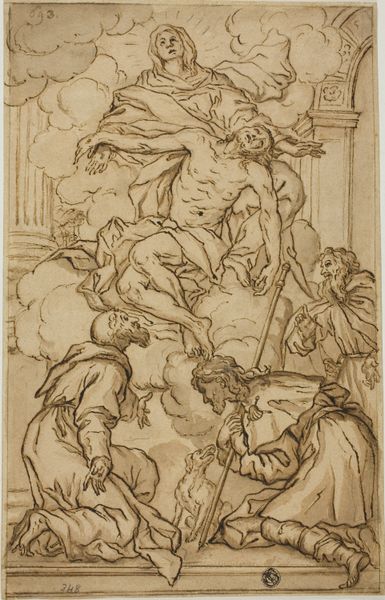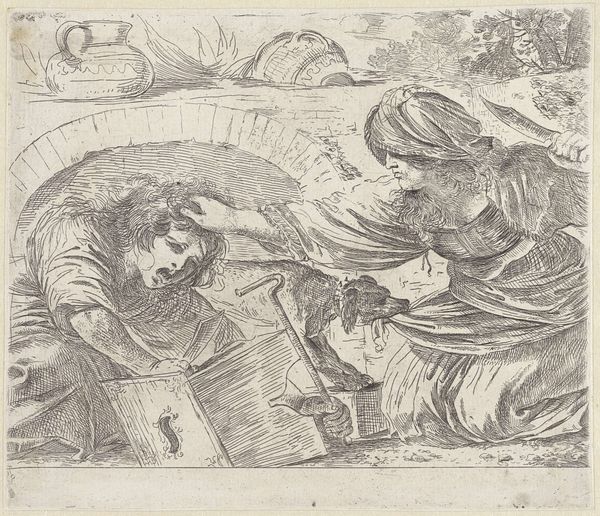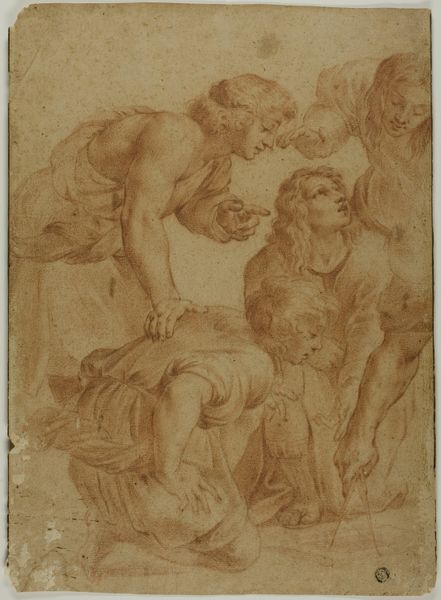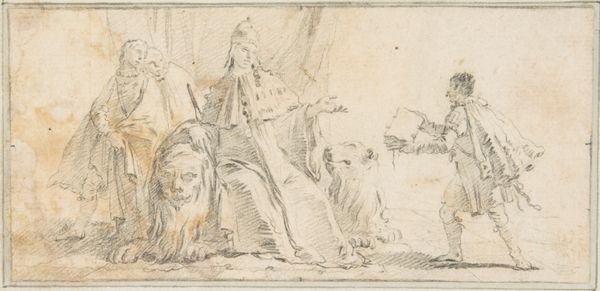
drawing, red-chalk
#
drawing
#
red-chalk
#
figuration
#
history-painting
#
rococo
Dimensions: 5 1/2 × 8 1/2 in. (13.97 × 21.59 cm) (sheet)13 1/4 × 16 × 1 in. (33.66 × 40.64 × 2.54 cm) (outer frame)
Copyright: Public Domain
Jean Robert Ango created this ‘Assumption of the Virgin’ sometime between 1759 and 1773 using a humble material: red chalk. The seeming simplicity of this medium belies its potential for both subtlety and speed. Notice the hatching that defines the Virgin’s robes and the quick strokes suggesting the clouds beneath her. Chalk allows an artist to build up tone and volume rapidly, ideal for preliminary sketches. The immediacy and relative inexpensiveness of chalk also made it an ideal medium for academic study, allowing students to quickly iterate and refine their compositions. This drawing could very well be a preparatory sketch for a larger painting or print, where Ango was working out the composition. While the finished work may never have materialized, this drawing gives us insight into the artist's process, and the artistic conventions of his time. So, next time you see a chalk drawing, consider it not just as a finished work, but as a window into the artist’s practice. It reminds us that even the simplest of materials can reveal complex ideas.
Comments
minneapolisinstituteofart almost 2 years ago
⋮
The French artist Robert Ango lived in Rome in the early 1760s and produced countless red chalk drawings copying Italian baroque paintings from the preceding century. The source for this study is Domenichino painting of the Assumption from the Virgin (1616-17) in Rome's church of Santa Maria in Trastevere, a canvas inserted into the lavish coffered ceiling that Domenichino also designed.
Join the conversation
Join millions of artists and users on Artera today and experience the ultimate creative platform.
